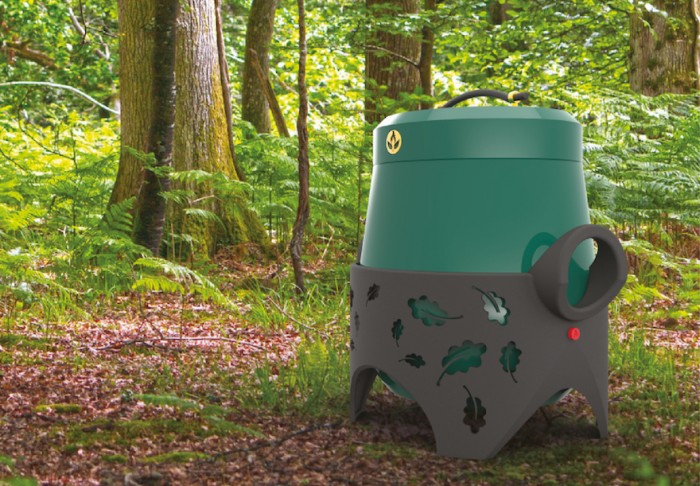
Industrial designer Sam Troop has designed a safe, efficient and sustainable portable cooker. The Eco-Grill is a response o the problems of barbecuing in the New Forest in England, and is developed using circular design principles.
The design was inspired by family visits to the New Forest (which always involved barbecues) and the discovery that most of the charcoal used in the UK comes from unstainable sources. The Eco-Grill is powered by sustainable charcoal and is ready to cook in half the time of disposable barbecues.
A student at Loughborough University, Troop recently won an RSA Student Design Award in the Project Rural challenge, sponsored by PriestmanGoode and The Eden Project. We talk to Troop about the Eco-Grill.
Can you explain how the Eco-Grill it works?
Using a flameless ignition system, the product can be ready to cook in 10 minutes, half the time of existing disposable barbecues. This new ignition is fully contained in the heart of the grill, and allows the product to be used anywhere in a forest environment, without any fire risks.
Sustainable charcoal is loaded into a container that’s located in the heart of the grill, the ignition system circulates heat through the coals and the inner construction of the grill allows heat to be distributed across the cast iron grill.
What inspired it and how did you develop the idea?
I’ve been visiting the New Forest with my family every year for the past 10 years. Being able to explore the forests and see the ever-changing environment fascinated me. I wanted to explore how I could use the Project Rural brief to fit in with this area. I developed the idea after contacting local businesses and forest users and finding that 90 per cent of charcoal that is used in the UK comes from unsustainable sources.
What is unique about your design for the Eco-Grill?
The Eco-Grill introduces something new to the barbecue market, it doesn’t just benefit one user, it supports all stages involved in a circular economy. The product uses sustainable produce from local suppliers of charcoal. The ash that’s left over from the burnt coals can then be collected and used in compost to help grow more trees and vegetables locally.
What was the biggest challenge in the design process?
Working out the best way the design could support as many stakeholders as possible in the local circular economy and finding out their individual needs.
How and where do you imagine it could be used?
The aim for the product is to be used in areas that currently ban the use of open flame cookers. The Eco-Grill could be rented by national parks or environment organizations to allow users to explore places of interest across the country whilst supporting sustainable producers.
Could it be used beyond the UK?
The original concept was designed for use in the New Forest in the UK, but following further research, it’s clear that the design has wider applications across the country and around the world, in national parks and places of interest. Another, completely different market for the Eco-Grill emerged through further research and conversations and this would be for use in spaces where garden space is limited or for apartments that have balconies and wish to have a barbecue but are unable due to the fire risks.
Is it easy to fix if it breaks?
User interaction was considered throughout the development stages, to allow for simplistic controls and little to no instructions needed to use the device. Due to the product being aimed at the rented market all parts are lockable by the seller to prevent tampering of the ignition system and charcoal so hacking of the product wouldn’t be allowed due to fire risks.
How did you research the project? Have you tested it?
The ignition system was tested to prove the feasibility of the concept, and to record actual results.
Research involved interviews with local charcoal producers to explore the current market and areas they found through experience that need addressing.
Experience prototyping was conducted with a rough scale prototype, which explored user interactions that allowed feedback to be collected to further develop the design.
What are your biggest learnings from studying design?
Three things I’ve learnt would be:
- Everything can always be improved
- Talk to as many people through the development process as possible
- Always consider the lifecycle of products
What is the role of the designer today?
Designers are problem solvers; they can create solutions for anything thrown in front of them, and they are the future of sustainable development.
What or who inspires you?
I find inspiration from other creative people. I like to look at everything from graphic illustrations to automotive design. I find it really useful to keep up to date with what other people are creating and it inspires me to continue to push my designs.
What does winning an award mean to you?
Being a winner of the RSA Student Design Awards is a great honor and an amazing achievement, after 4 years of university and hard work it’s great to see that my abilities as a designer are coming together.






